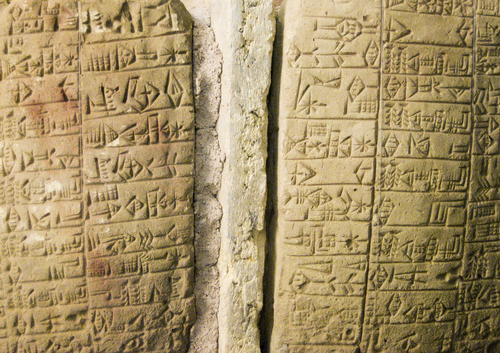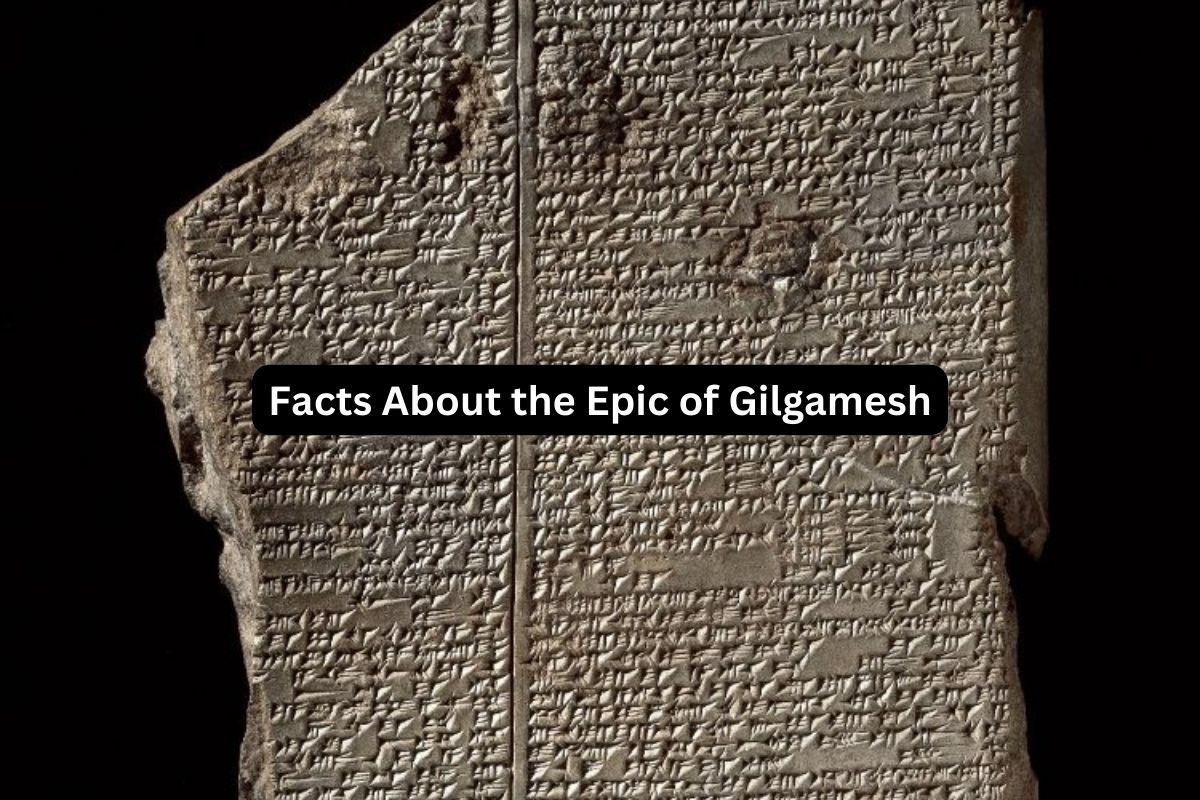The Epic of Gilgamesh is an ancient Mesopotamian literary masterpiece and one of the oldest surviving works of literature in the world.
It tells the story of Gilgamesh, the legendary king of Uruk, and his companion Enkidu as they embark on epic adventures and confront profound existential questions.
Written around 2100 BCE, the epic is composed of approximately 12 tablets, each narrating a different aspect of Gilgamesh’s journey. It explores themes such as the quest for immortality, the nature of humanity, and the complex relationship between humans and gods.
The epic’s influence extends to later works of literature and provides valuable insights into the ancient Mesopotamian culture and beliefs.
Epic of Gilgamesh Facts
1. Oldest surviving work of literature
The Epic of Gilgamesh is widely recognized as the oldest known work of literature in human history.
Its age and preservation make it an invaluable artifact for understanding the ancient civilizations of Mesopotamia. It predates famous literary works such as Homer’s Iliad and Odyssey by several centuries.
2. Written around 2100 BCE in ancient Mesopotamia
The epic was composed in ancient Mesopotamia, a region that corresponds to present-day Iraq.
It emerged during the Sumerian civilization and was written in cuneiform script, which was one of the earliest writing systems developed by humanity.
The time period in which it was written is commonly referred to as the Bronze Age.

3. Named after the main protagonist, Gilgamesh
The epic takes its name from the central character, Gilgamesh, who was a legendary king of Uruk, an ancient city-state in Mesopotamia.
Gilgamesh was believed to be a historical figure, although his deeds and adventures were later intertwined with mythology and folklore. The epic chronicles his exploits, struggles, and quests for immortality.
4. Consists of approximately 12 tablets or sections
The Epic of Gilgamesh is divided into several tablets or sections, each containing a distinct part of the story. The exact number of tablets may vary depending on the version, but the most commonly known version consists of 12 tablets.
Each tablet narrates different episodes, events, or aspects of Gilgamesh’s journey, creating a coherent and episodic narrative structure.
5. Follows the adventures of Gilgamesh and his companion Enkidu
The epic revolves around the friendship and exploits of Gilgamesh, the king of Uruk, and Enkidu, a wild man who is created by the gods to challenge Gilgamesh’s arrogance and power.
Initially, they are adversaries, but through a series of trials and adventures, they develop a deep bond and become inseparable companions, embarking on various quests together.
6. Explores themes of immortality, humanity, and the gods
The Epic of Gilgamesh delves into profound philosophical and existential themes. One of the central themes is the quest for immortality, as Gilgamesh, driven by grief over the death of his friend Enkidu, seeks a way to overcome death and attain eternal life.
The epic raises questions about the limitations of human existence, the inevitability of mortality, and the significance of human achievements in the face of a vast and often capricious divine realm.
It also explores the complex dynamics between humans and gods, depicting encounters, conflicts, and interactions between mortal beings and deities.
These themes provide a rich tapestry for contemplating the human condition, the pursuit of meaning, and the relationship between humans, the divine, and the natural world.
The narrative confronts Gilgamesh and the readers with existential dilemmas, prompting reflection on the nature of life, the fleeting nature of power, and the importance of friendship and love in the face of mortality.

7. Features a story of a flood similar to Noah’s Ark
One of the prominent episodes within the Epic of Gilgamesh is the story of a catastrophic flood. In this narrative, Gilgamesh encounters Utnapishtim, a character who survived a massive flood sent by the gods.
Utnapishtim was warned by the god Ea and instructed to build a large boat, similar to the story of Noah’s Ark in the biblical tradition.
The flood narrative in the Epic of Gilgamesh shares similarities with other flood myths found in various cultures worldwide, highlighting the widespread cultural significance of this motif.
8. Enkidu starts as an adversary but becomes Gilgamesh’s friend
Enkidu, initially a wild and untamed man, is created by the gods in response to Gilgamesh’s tyranny. He is sent to challenge and subdue Gilgamesh, but instead, they engage in a fierce battle that ends in a draw.
Eventually, Enkidu and Gilgamesh recognize their shared strength and become close friends. Enkidu’s transformation from adversary to ally underscores the power of friendship, companionship, and mutual understanding as catalysts for personal growth and change.
9. Influenced later works of literature, including the Bible
The Epic of Gilgamesh had a significant impact on subsequent literary works. Scholars have identified parallels between elements of the epic and stories found in the Hebrew Bible, particularly the accounts of the Flood in the Book of Genesis.
The similarities in the narratives suggest that there might have been cross-cultural influences, shared oral traditions, or a common source from which these stories emerged.
10. Explores the underworld and afterlife, providing wisdom to Gilgamesh
In his quest for immortality, Gilgamesh embarks on a journey to the underworld, a realm of darkness and mystery. There, he encounters several figures, including the ghost of his deceased friend Enkidu and the sage Utnapishtim, who imparts wisdom and insights about life, death, and the human condition.
The journey to the underworld serves as a transformative experience for Gilgamesh, providing him with a deeper understanding of mortality and the ephemeral nature of human existence.
The enduring legacy of the Epic of Gilgamesh lies not only in its exploration of fundamental human themes but also in its influence on subsequent literature, its ability to captivate readers across millennia, and its invaluable role in preserving the cultural and mythological heritage of ancient Mesopotamia.
